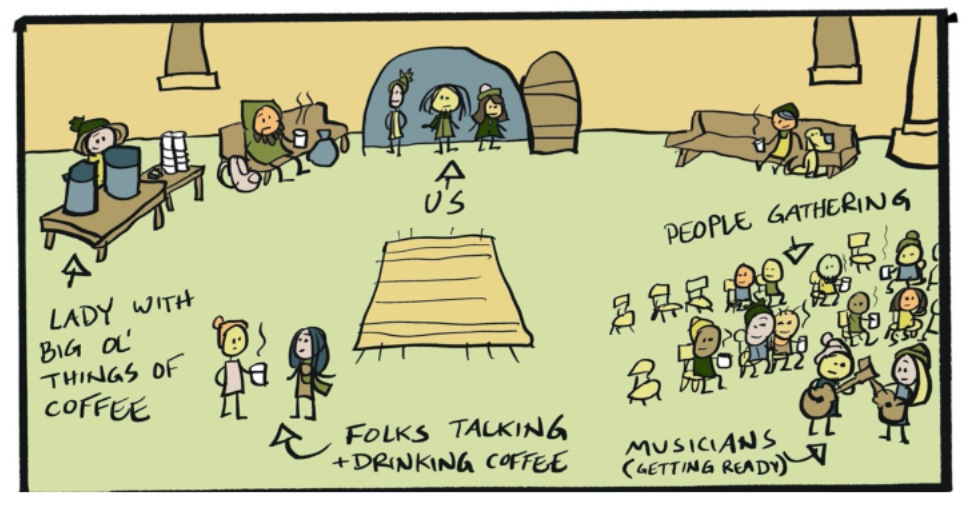Point-Counterpoint: Providing Examples with Creative Prompts
A peek into an ongoing advisor-advisee conversation

I am an unrelenting proponent of what education scholars variously call project-based learning or authentic assessment. I teach in practical disciplines, and I want my students to come out of my classes having had the chance to do the work of Christian formation leadership or digital literacy development under as realistic a set of parameters as possible, given the educational setting.
It's not always easy for teachers to shift their assignment-creation focus from some flavor of "what do you think?" to some flavor of "try it out!" From articulating prompts to scaffolding process to providing accessible and actionable feedback, there are a lot of challenges. I've got bullets on bullets of outlines to share in this newsletter about tackling them.
But there's a particular quandary in this little corner of teaching practice that I find to be endlessly fascinating and impossible to resolve. I've thought a lot about it because I largely come down on one side of the dilemma, and my dissertation advisor largely comes down on the other. We had some rich and playful conversations about it when I served as her TA in Culture, Media, & Education.
This is going to be another two-issue week for me—today and tomorrow before a few nights in Door County, WI. (If you're not familiar, it's kinda like the coast of Maine if you swapped out Lobster Everything for Cherry Everything. Its peninsular shape seems to dictate that it has a pretty steady and finite capacity, and we discovered last year that the July 4 holiday doesn't seem to be any busier there than the rest of the season.)
So here's my argument for providing sample submissions:
(1) Most importantly, providing a few examples alleviates student anxiety.
It's hard to be creative when you're scared, and authentic assessment is all-too-frequently an unfamiliar experience for students. Providing sample submissions helps students take a deep breath and understand the scope of what a teacher is asking them to do. In my view, the concreteness of an actual submission is much more effective at this than paragraph after paragraph (or table after table, or whatever) of written guidelines.
(2) I also think providing examples can nudge students a little more firmly toward the more playful, creative, multimodal approaches I usually hope they will take but don't want to require them to take.
I think it undermines the purpose and spirit of an open-ended assignment if I forbid students from doing something conventional (in the seminary world, that often means a reflection essay or text study). But the fact that these forms are conventional takes the pressure off of illustrating those approaches. Thus, I can save the sample submissions for videos, podcasts, comics, mock newsletters, and other ways to get students thinking about how to present or even embody their learning.
When you show people that they can do something outside-the-box and still meet their learning goals, they usually welcome the opportunity.
(3) Finally, providing samples also gives me an opportunity to connect the elements of a successful submission to the evaluation criteria I have enumerated.
A lot of adult learners just aren't that motivated by grades. And the truth is that I don't especially want them to be. However, the way I allocate grading rubric points does correspond to my sense of what a student would need to do to demonstrate their learning in a convincing way. I don't want them to care about the grade per se, but I do want them to address the goals of the learning activity.
In my experience, assignment rubrics are more useful for giving instructors a way to justify their grades than for students to ensure they're on the proper path. I'm sometimes shocked by how apparently carelessly students seem to ignore "where the points are" in a given assignment.
But if I can mark up a few key places in a sample that make it very clear how a particular aspect of the grading rubric has been addressed, I do think that helps students try to do likewise in their own submissions. Maybe they're not ignoring our guidance. Maybe they need more help understanding how to put our guidance into action!
What arguments am I missing? Why else should we provide sample submissions to open-ended assignments?
And if you don't think we should, don't worry. I'll do my best to make the counter-argument tomorrow.


